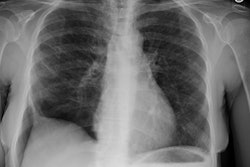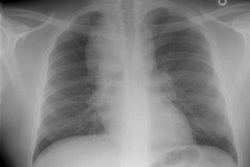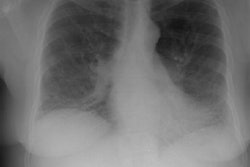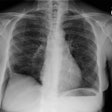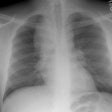Follicular bronchiolitis: thin-section CT and histologic findings.
Howling SJ, Hansell DM, Wells AU, Nicholson AG, Flint JD, Muller NL
PURPOSE: To evaluate the thin-section computed tomographic (CT) findings of follicular bronchiolitis and compare them with the histologic findings. MATERIALS AND METHODS: Thin-section CT scans obtained in 12 patients (age range, 24-77 years; mean age, 47 years) with follicular bronchiolitis proved at open lung biopsy were reviewed by two observers. Underlying conditions included rheumatoid arthritis (n = 8), mixed collagen vascular disorders (n = 2), autoimmune disorder (n = 1), and acquired immunodeficiency syndrome (n = 1). All patients had thin-section CT scans (1.0-1.5-mm collimation, 11 patients; 3.0-mm collimation, one patient; high-spatial-frequency reconstruction algorithm) obtained at 10-mm intervals through the chest. RESULTS: The main CT findings included bilateral centrilobular (n = 12) and peribronchial (n = 5) nodules. All 12 patients had nodules smaller than 3 mm in diameter; six patients also had nodules 3-12 mm in diameter. Areas of ground-glass opacity were present in nine (75%) patients. Histologically, all patients had lymphoid hyperplasia along the bronchioles; eight had peribronchiolar lymphocytic infiltration. CONCLUSION: The cardinal CT feature of follicular bronchiolitis consists of small centrilobular nodules variably associated with peribronchial nodules and areas of ground-glass opacity.
PMID: 10478225, UI: 99407663

